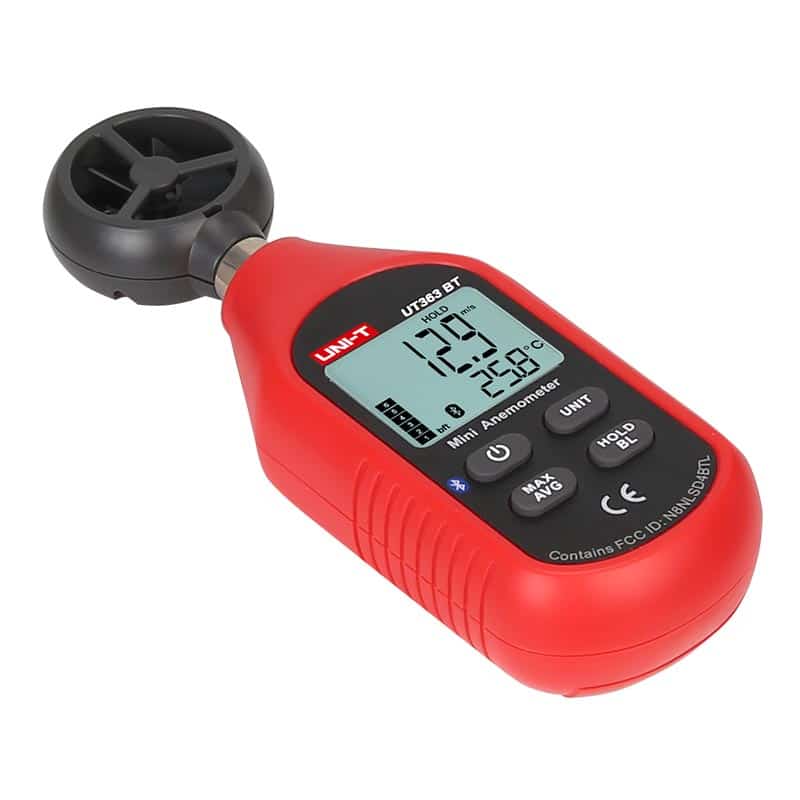Leading Attributes to Seek in a Reliable Anemometer for Accurate Wind Measurement
Leading Attributes to Seek in a Reliable Anemometer for Accurate Wind Measurement
Blog Article
All You Need to Understand About Anemometers: How They Function, Why They Matter, and Where to Make use of Them
Anemometers, however commonly forgotten in the realm of scientific tools, play a crucial role in different fields, using useful understandings right into wind speed and air flow patterns. Recognizing the technicians behind these gadgets is vital for anyone seeking to harness the power of this data. From meteorologists tracking weather condition patterns to designers creating frameworks with wind loads in mind, the applications of anemometers are far-reaching and varied. As we explore the intricacies of anemometer innovation, we will certainly reveal the inner functions of these gadgets, their relevance, and the key factors to consider when picking the right anemometer for particular applications.

Anemometer Fundamentals
A necessary instrument used to determine wind rate and direction, the anemometer plays an essential role in weather forecasting and various markets. An anemometer generally is composed of three or four cups that rotate in the wind, a vane that aims into the wind, and sensors to track the rotations or movements.
There are numerous types of anemometers readily available, including cup anemometers, vane anemometers, hot-wire anemometers, and sonic anemometers, each with its special functions and applications. Cup anemometers are commonly used for standard wind speed measurements, while vane anemometers are chosen for directional dimensions.
Principles of Anemometer Procedure
Structure on the fundamental understanding of anemometer fundamentals, the concepts of anemometer operation elucidate the mechanics behind wind rate and instructions dimensions. Anemometers operate the concept of airflow influencing a sensor, triggering it to turn. Mug anemometers, as an example, have three or even more cups that capture the wind, creating them to rotate faster as the wind speed rises. The turning rate is then exchanged a wind rate measurement. Vane anemometers, on the other hand, use a tail or a probe that aligns itself with the wind direction, supplying a dimension of wind instructions based on the orientation of the sensor. Hot-wire anemometers depend on a warmed cord that cools off as wind passes over it, with the price of cooling down establishing the wind rate. Ultrasonic anemometers procedure wind rate and instructions by evaluating the time it considers ultrasonic signals to travel in between transducers. Recognizing these principles is critical for precise and reputable wind dimensions in different applications.
Importance of Anemometers
Anemometers play a crucial function in measuring wind speed and instructions, offering vital data for weather projecting, climate researches, ecological tracking, and aviation operations. Meteorologists depend on anemometers to gather precise wind data, helping them comprehend climate patterns, predict tornados, and problem prompt cautions to the public. Wind farm operators utilize anemometers to assess wind problems and maximize electrical energy manufacturing from wind generators.
Applications Throughout Numerous Industries
Applications of anemometers useful reference extend throughout varied markets, showcasing their flexibility and utility beyond weather forecasting. In the renewable power market, anemometers play a crucial duty in examining wind conditions for wind farm positionings, guaranteeing optimal energy production. Industries like building and mining utilize anemometers to monitor wind rates, critical for security protocols, especially when working at elevations or in open-pit mines where strong winds can posture threats. Anemometers are additionally important in the aeronautics industry, assisting pilots in recognizing airspeed and wind instructions for risk-free take-offs and touchdowns. The maritime market gain from anemometers for ship navigating, aiding sailors expect climate changes and change routes accordingly. In farming, anemometers assist farmers in managing plant spraying by supplying real-time data on wind rate to prevent drift. Anemometers find applications in HVAC systems to optimize air movement and boost power performance in structures. The varied usage cases of anemometers underscore their relevance throughout different industries, highlighting their crucial function in boosting operational safety and security and efficiency (anemometer).

Picking the Right Anemometer for Your Requirements
Selecting the suitable anemometer tailored to your details needs is important for obtaining exact wind rate and direction measurements. When selecting an anemometer, consider aspects such as the desired application, required measurement range, environmental conditions, and desired features. For general functions, a mug anemometer is ideal for gauging wind speed, while a vane anemometer provides wind instructions information. Hot-wire anemometers are perfect for reduced airspeed dimensions, and ultrasonic Extra resources anemometers offer high precision and sturdiness.

Conclusion
Finally, anemometers play a vital duty in gauging wind speed and instructions across different industries. Understanding the concepts of anemometer operation is vital for choosing the ideal device for particular requirements. From meteorology to aeronautics, anemometers are crucial devices for making certain and collecting precise information safety and security in various applications. It is very important to think about the relevance of anemometers in order to make informed decisions when choosing the most suitable tool for measuring wind conditions.
There are numerous types of anemometers available, including mug anemometers, vane anemometers, hot-wire anemometers, and sonic anemometers, each with its special attributes and applications. Cup anemometers are typically used for basic wind rate dimensions, this content while vane anemometers are chosen for directional measurements. Hot-wire anemometers are ideal for low airspeeds, and sonic anemometers are suitable for high-precision dimensions in study and industrial setups.Structure on the fundamental understanding of anemometer essentials, the concepts of anemometer operation illuminate the mechanics behind wind rate and direction measurements. For basic purposes, a mug anemometer is ideal for measuring wind speed, while a vane anemometer provides wind direction data.
Report this page